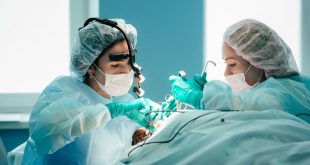Dermabrasion, also known as skin sanding, is a surgical technique in which the physician uses a wire brush or diamond wheel in an attempt to make the scars less visible by sanding them. When the tool is turned on, it rotates rapidly and takes off while leveling the outer layers of the skin.
Local anesthesia is administered into the area before the dermabrasion treatment because the procedure injures the skin and causes it to bleed. During its healing stage, which takes a few weeks, the new skin grows while replacing the damaged skin removed during dermabrasion.
Due to the development of newer treatment procedures, such as laser skin resurfacing, dermabrasion is no longer the first choice of treatment for resurfacing deep facial scars. However, for people who are unable to use the new methods, dermabrasion is the best option.
Also Known As: Skin Sanding
Benefits of Dermabrasion
The most common reason for a dermabrasion treatment is acne scars, followed by scars from trauma or surgery.
It will also benefit patients with defects or damages to the upper layers of their skin including conditions such as superficial skin growths, small cysts, Bowen’s disease (basal cell skin cancer) or epidermal nevi.
Dermabrasion can also benefit people wanting to remove tattoos and wrinkles. It is also helpful to patient with color changes in the skin (melasma or solar lentigines).
You may not be qualified to be treated with dermabrasion if you recently had a facelift or forehead lift, used isotretinion within the last year, have an abnormal scarring history or active herpes infection, excessive cold sensitivity and skin, immune or blood flow disorder.
The Dermabrasion Procedure
Like all plastic surgery procedures, the area to be treated with dermabrasion is cleaned and marked. To numb the skin before treatment, a local anesthetic (such as epinephrine or lidocaine) is used and ice packs are applied to the skin for at least 15 to 30 minutes. For deeper abrasions, the anesthetic and ice pack may not work. During these occasions, a freezing spray (crogenic) may be used. When the entire face is going to be treated, stronger anesthesia, sedation or painkillers may be administered.
During dermabrasion, one little area at a time is treated. If needed, the freezing spray is applied and then the rotating brush is used to sand off the top layers of the skin. To stop any bleeding, gauze is used.
The procedure is then repeated until the entire area is treated. It is then applied with ointment and covered with clean dressing.
Recovery After Dermabrasion Procedure
The healing time will depend largely on the depth and size of the area treated. For instance, a full-face dermabrasion will take a longer recovery time than a patient who was treated with just a small area of skin.
Generally, skin re-growth takes place within five to eight days. The new skin will be a reddish or pinkish color, which normally fades within six to twelve weeks. During this period, concealing makeup can be used to achieve normal skin tones.
Depending also on the size of area treated, some people will experience no pain after dermabrasion and returns to daily activities after the procedure. However, other people require painkillers for swelling.
After the procedure, you will be instructed to clean your face several times a day to avoid possible infection and re-apply ointment until the skin has healed.
The result of dermabrasion will be seen in four to six weeks.
The Results
Since it is more commonly used for acne scars, dermabrasion positively has a lasting effect for patients. However, dynamic wrinkles can redevelop in a few years.
Satisfaction will depend on the severity of the patient’s condition. The deeper acne scars and wrinkles, the more likely that several treatments are required to achieve satisfactory results.
For extremely deep wrinkles and acne scars, laser technology can solve your problem. Talk to your skin care specialist about your condition.
Surgical facility And Cost
Dermabrasion is usually done in the doctor’s office as an outpatient basis.
The cost of dermabrasion generally depends on skincare specialist fees and influenced by geographic location. The average dermabrasion fee is $1,400.
However, this fee does not include operating room facility, anesthesia, hospital stay and other related expenses.
The standard fee for dermabrasion including all expenses is around $2,000 and $3,000. A full-face dermabrasion may cost about $4,000. Lip dermabrasion will cost around $1,500, while cheeks at $3,000.
Side Effects, Risks, Complications and Contradictions
A patient treated with dermabrasion may experience temporary side effects such as scarring, swelling, redness, flaring up of acne or cysts, increased skin color and increased sensitivity to light.
Although these complications rarely occur, some patients may experience scarring, lasting redness, prolonged loss of skin color, tissue damage from freezing spray and infection from antiviral medication.
 Lesbian, Gay, Bisexual, Transgender & Intersex News Lesbian News, Gay News, Bisexual News, Transgender News, Intersex News, LGBTI News
Lesbian, Gay, Bisexual, Transgender & Intersex News Lesbian News, Gay News, Bisexual News, Transgender News, Intersex News, LGBTI News




